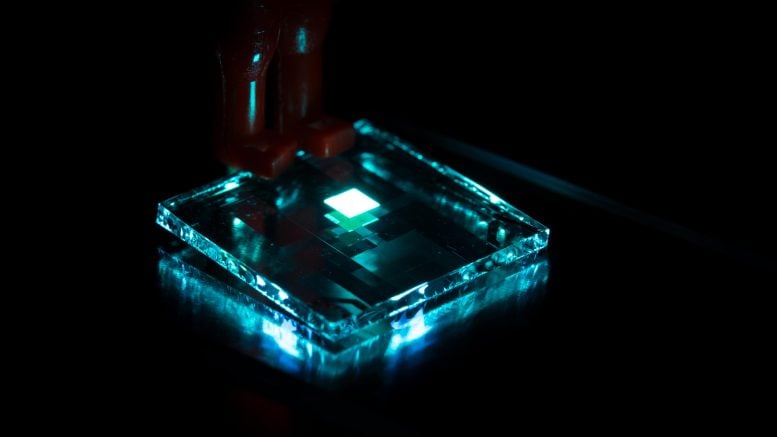
Scientists have developed a model that predicts a massive boost in OLED brightness using polaritons—hybrid light-matter states.
By fine-tuning the number of molecules involved, they achieved a staggering 10-million-fold improvement in efficiency. This discovery could transform OLED technology, making displays brighter and more power-efficient than ever.
A Bright New Future for OLEDs?
OLED technology is now widely used in high-end display devices like smartphones, laptops, TVs, and smartwatches.
Thanks to their flexibility, thin design, and energy efficiency, OLEDs are transforming lighting and display applications. However, one major limitation remains: their relatively low efficiency in converting electrical energy into light. Currently, only about 25% of the energy results in the rapid emission of photons, a key requirement for brighter displays. This inefficiency is one reason OLEDs tend to be dimmer than other lighting technologies.
To address this challenge, researchers from the University of Turku in Finland and Cornell University in the U.S. have developed a predictive model that could dramatically improve OLED brightness.
The Science Behind OLEDs and Polaritons
OLEDs work by using organic, carbon-based materials that emit light when an electric current passes through them. Unlike LCDs, where light comes from a backlight, OLED pixels emit their own light, allowing for deeper contrast and thinner displays.
When the light-emitting organic materials are placed between two semi-transparent mirrors, they can interact with the confined light to form hybrid light-matter states known as polaritons.
By carefully tuning these polariton states, researchers believe it’s possible to convert the remaining 75% of non-emissive “dark” states into light-emitting ones, dramatically improving efficiency.
“While the general idea of using polaritons in OLED technology is not entirely original, a theory that examines the boundaries of performance gains has been missing. In this work, we carefully examined where the polariton sweet spot lies in different scenarios. We found that the strength of the polaritonic effect in OLEDs’ performance depends on the number of coupled molecules. The fewer, the better,” says Associate Professor Konstantinos Daskalakis from the University of Turku.
A Stunning 10-Million-Fold Enhancement
“With the molecules we studied and a single coupled molecule, the efficiency improved significantly. The dark-to-bright conversion rate increased by a whopping factor of 10 million at best,” says Postdoctoral Researcher Olli Siltanen.
With a large number of molecules, the polaritonic effect was negligible. Therefore, the dark-to-bright conversion rate of present-day OLEDs cannot be enhanced simply by equipping them with mirrors.
“The next challenge is to develop feasible architectures facilitating single-molecule strong coupling or invent new molecules tailored for polariton OLEDs. Both approaches are challenging, but as a result, the efficiency and brightness of OLED displays could be significantly improved,” Daskalakis explains.
A Breakthrough That Could Change Displays Forever
The widespread adoption of OLEDs has been hindered by efficiency, but more importantly by brightness limitations, particularly when compared to traditional inorganic LEDs. The results of this study provide a path forward, laying the foundation for OLEDs that are not only more efficient but also capable of achieving performance levels previously thought impossible.
The results have been published in the journal Advanced Optical Materials.
Reference: “Enhancing the Efficiency of Polariton OLEDs in and Beyond the Single-Excitation Subspace” by Olli Siltanen, Kimmo Luoma, Andrew J. Musser and Konstantinos S. Daskalakis, 25 January 2025, Advanced Optical Materials.
DOI: 10.1002/adom.202403046
